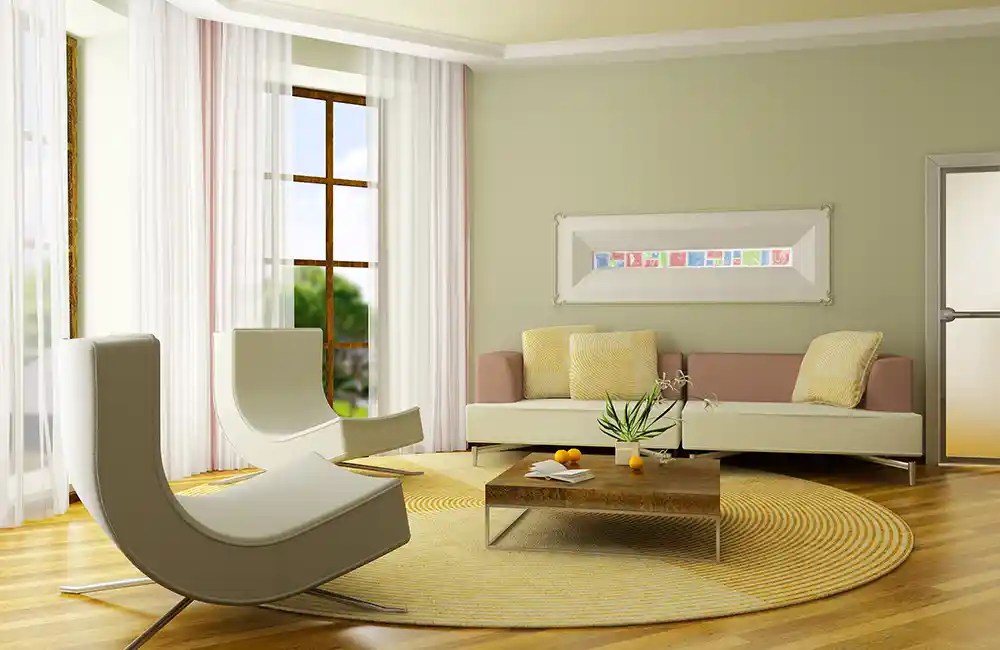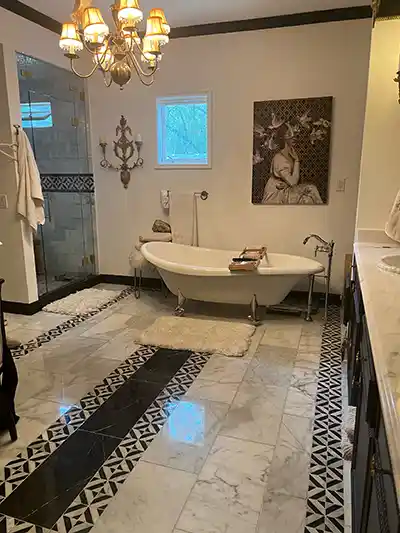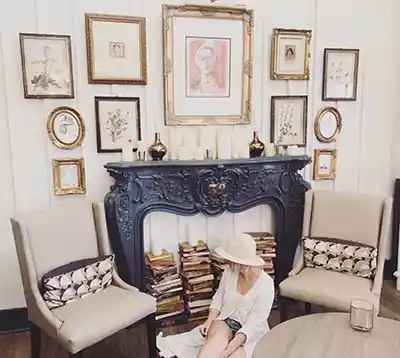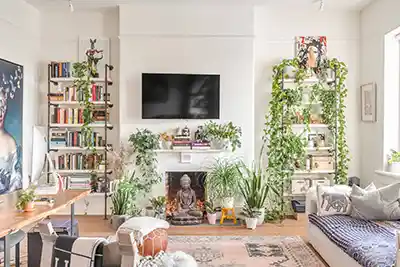
Finding your interior design style should be simple, fun and rewarding. A great place to start is in purging the things that no longer serve you. If something is broken, chipped, isn’t meaningful, isn’t useful, doesn’t function or isn’t beautiful, get rid of it. Ditto for the things that you haven’t looked at or touched in six months: toss, donate or gift them. Purging creates inspiration for finding your design style, because you’ll find a new appreciation for what you already own and decided to keep.
Next, remove all clutter such as fake flowers and knickknacks. Stop buying cheap accessories for the sake of having, and instead invest the money you would have spent on a more expensive piece of furniture that will hold up against the test of time, children or pets. No matter what your design style is, from now on nothing comes into your house that is not intentional. Strategically chosen pieces only, please.
Now that you have a streamlined base to work with, it’s time to find your inspiration. Nature or nearby architecture can be influential guides for choosing your range of colors, patterns and textures. Pinterest, furniture stores and design magazines such as Architectural Digest, Elle Decor, and World of Interiors are also fabulous catalysts for creativity. Just be careful not to get too attached to trends, because what’s stylish today will be outmoded a year from now. For example, many designers are currently throwing shade on the color gray, calling it outdated and boring. But if you love gray, don’t be deterred by someone else’s opinion of what is or what isn’t fashionable. Go ahead and paint the walls a charcoal or kitten hue such as Antique Pewter or Smoke Embers from the Benjamin Moore classics collection. Buy that husky-toned velvet tufted-back sofa because you love it. Gray is a timeless neutral: how can a classic go out of style? You can always pop the muted color with a few chartreuse silk throw pillows, et voila: instant glamor. In sum, this is your home, so do what makes you happy in it.
Narrowing down your style can often feel overwhelming with so many choices online, in furniture stores and in magazines. The following four approaches will help you find a deeper clarity about what you want to accomplish so you can formulate your design plan accordingly.

City Chic
City Chic is bold and unafraid when it comes to color, pattern and texture. Pastels like pale yellow have no place in the City Chic interior. Choosing a richer ochre tone such as Antiquity or Classical Gold from the Colors of Historic Charleston collection by Sherwin Williams will add layers of depth to these interiors. Enhance classic architectural details like soaring ceilings, crown molding, wainscotting, giant doors, big baseboards, oversized heart of pine planks or carved mantels with a black and white marble checkerboard entryway. Large urns potted with topiaries, contemporary art blended with classical paintings and stone-carved busts are also welcome in this space. Silk or velvet curtains, lacquered case pieces and carpets imported from Turkey, Morocco or India can add some flair. City chic can be sleek and modern minimalist, allowing each piece to speak for itself; or traditional and classic. Either way, this style is always polished, high-drama, sophisticated and never fussy.

Lowcountry Elegance
Whether your view is of the beach, marsh, river, woods or sky, Lowcountry Elegance draws its inspiration from nature. Bringing the outdoors in with grass cloth wallpaper, sisal rugs, slipcovered sofas and walls painted a soft neutral such as Seacliff Heights, Antique Jade or Chatsworth Cream from the Benjamin Moore Classics Collection, creates a calm and soothing ambiance. This comfortable yet elegant design style layers with books, throw pillows, blankets, plants and other elements from nature, such as a giant basket of firewood by the hearth. Choose ambient lighting such as lamps, sconces, and candles; put overhead lights such as chandeliers and pendants on a dimmer switch. And always go with soft white bulbs so that your rooms will glow instead of glare.

Cottage Luxury
This design style conjures visions an old-world French or English countryside cottage, incorporating rustic design elements such as copper pots, cane back chairs, Provencal tablecloths, distressed leather chairs atop Aubusson rugs and fresh-cut flowers in antique vases. By selecting a pastel, such as Rose Accent or Rose Lace from the Benjamin Moore classics collection, your interiors will glow at night like the inside of a jewel box. An untamed design style, Cottage Luxury playfully and strategically blends elements of surprise such as mixing patterns and textures on wallpaper, curtains, upholstery and throw pillows, to create a timeless and inviting space. Enhance your Cottage Luxury interiors with a lavish maximalist approach by hanging art from floor to ceiling in the gallery-style, and group similar items together to repeat a pattern, making an impactful statement.
 Eclectic Flair
Eclectic Flair
Perhaps all or none of the above styles speak to you, and you’re finding it difficult to pigeonhole yourself into a category. If so, Eclectic Flair may be the approach for you, because this method of design tells the unique story of your life. Maybe you’ve traveled the world and shipped back artifacts from many different countries and cultures, in which case you could group your collections together to create rooms and nooks with themes, such as the Silk Road or the Orient Express. Layer your treasures in a way that they work together to create a rich aura of mystery. Use rich colors such as Drawing Room Blue from Farrow & Ball for a backdrop against your array of China blue and white vases filled with lichen-colored hydrangeas fresh from the garden. Choose Vert De Terre, also from Farrow & Ball, to compliment a cluster of bright pink orchids.
No matter what design style you choose, remember that like copper aging to verdigris, sophisticated interiors evolve over time. Be particular and purposeful. Trust your intuition, go with what feels right and play around with your creativity, paying attention to the small details while keeping the bigger vision in sight. And most importantly, don’t forget to have fun.
By Sarah Rose